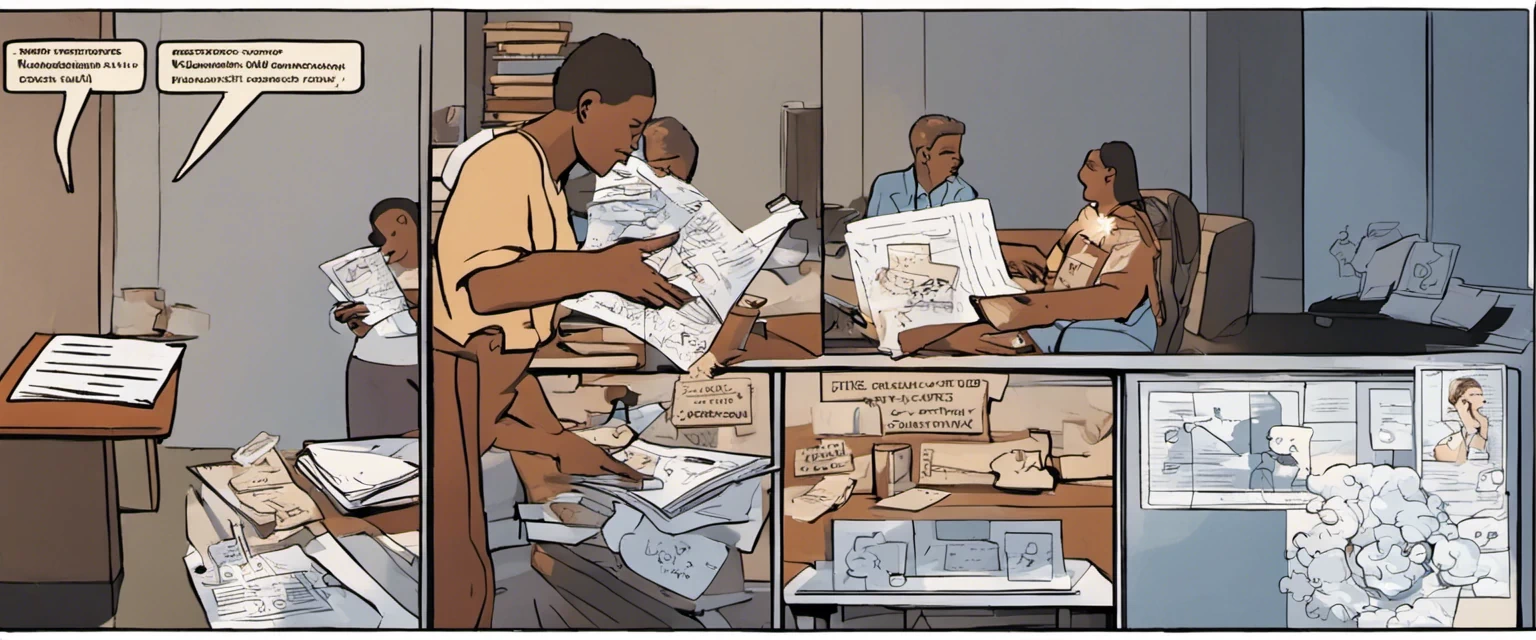—Crucial Conversations & Difficult Conversations
In a world filled with diverse perspectives and varying opinions, effective communication becomes the cornerstone of healthy relationships, successful collaborations, and overall growth. It is in this context that two seminal works, “Crucial Conversations” by Kerry Patterson, Joseph Grenny, Ron McMillan, and Al Switzler, and “Difficult Conversations: How to Discuss What Matters Most” by Douglas Stone, Bruce Patton, and Sheila Heen, emerge to provide invaluable insights into the art of navigating challenging discussions. These groundbreaking books form the foundation of a comparative study, wherein we meticulously examine the strategies, approaches, and overarching themes of each text to illuminate the nuanced yet powerful ways in which they shed light on the intricacies of human conversation. Through an exploration of their distinct perspectives, methodologies, and real-life examples, this study seeks to equip readers with a comprehensive understanding of how to transform difficult conversations into opportunities for growth, understanding, and meaningful resolution. By delving into the depths of both “Crucial Conversations” and “Difficult Conversations,” we aim to uncover the similarities, contrasts, and individual strengths of these seminal works, offering a holistic examination of their shared goal: empowering individuals to engage in transformative dialogues that shape the world around them.
Brief Summary of Two Books
Crucial Conversations by Kerry Patterson
Crucial Conversations by Kerry Patterson, Joseph Grenny, Ron McMillan, and Al Switzler is a highly regarded self-help book that offers practical strategies for tackling difficult and important conversations. The authors emphasize the importance of crucial conversations in various aspects of life, including personal relationships, work, and social environments. They outline techniques to effectively communicate and resolve conflicts through creating a safe and open environment, practicing active listening, and using persuasive dialogue. The book provides readers with the tools to handle high-stakes conversations with confidence and effectiveness, fostering healthier relationships and achieving more desired outcomes.
Difficult Conversations: How to Discuss What Matters Most by Douglas Stone
Difficult Conversations: How to Discuss What Matters Most” by Douglas Stone, Bruce Patton, and Sheila Heen is a renowned self-help book that provides practical strategies for engaging in challenging conversations effectively. The authors explore the various factors that make conversations difficult, such as differences in perspective, intentions, and emotions. They introduce the concept of the “three conversations” – the “what happened” conversation, the feelings conversation, and the identity conversation – and guide readers in understanding and navigating each of them. Through examples and step-by-step advice, the authors emphasize the importance of active listening, empathy, and reframing perspectives to foster understanding and find mutual solutions. This book is a valuable resource for anyone seeking to improve their communication skills and handle difficult conversations with confidence and success.
Comparison between Two Books

Similarities in conversations
Both Crucial Conversations and Difficult Conversations are books that focus on improving the effectiveness and outcome of conversations. They share several similarities in their approaches to handling difficult discussions:
1. Importance of Identifying High-Stakes Conversations: Both books emphasize the significance of identifying conversations that have a high potential impact on relationships or outcomes. They stress that recognizing these crucial or difficult conversations is the first step towards addressing them constructively.
2. Emphasis on Creating a Safe Space: Both books emphasize the need to create a safe and non-threatening environment for open and honest dialogue. They stress that creating psychological safety allows participants to share their perspectives and concerns without fear of negative consequences.
3. Focus on Active Listening: Both books highlight the importance of active listening skills in conversations. They stress the need to listen with genuine curiosity and empathy, striving to understand the other person’s perspective fully.
4. Strategies for Managing Emotions: Both books provide strategies for managing emotions during challenging conversations. They discuss the significance of self-awareness and self-regulation, encouraging readers to recognize and control their emotions to maintain effective communication.
5. Techniques for Constructive Conflict Resolution: Both books offer techniques for resolving conflicts and reaching mutually agreeable solutions. They emphasize the importance of seeking common ground and exploring win-win scenarios in difficult conversations.
6. Encouragement of Dialogue over Debate: Both books advocate for dialogue rather than debate or argument. They promote the idea that conversations should be focused on understanding and finding solutions, rather than proving oneself right or imposing one’s viewpoint on others.
7. Attention to Non-Verbal Communication: Both books acknowledge the importance of non-verbal cues in conversations. They highlight the significance of body language, tone of voice, and facial expressions, reminding readers to pay attention to these aspects to better understand and respond to others.
In summary, both Crucial Conversations and Difficult Conversations share a common focus on creating a safe environment, active listening, managing emotions, and finding constructive solutions during challenging conversations. They provide readers with practical strategies and techniques to navigate difficult discussions successfully.
Divergences in conversations
Crucial Conversations by Kerry Patterson, Joseph Grenny, Ron McMillan, and Al Switzler and Difficult Conversations: How to Discuss What Matters Most by Douglas Stone, Bruce Patton, and Sheila Heen are both highly regarded books that offer guidance on having important conversations. However, there are several key divergences in the approaches and content of these two books.
1. Paradigm and emphasis:
– Crucial Conversations focuses on understanding the concept of high-stakes conversations and provides a framework to navigate them effectively. It emphasizes the importance of mastering dialogue skills and creating safety when discussing sensitive issues.
– Difficult Conversations takes a broader perspective and delves into the complexities of all challenging conversations, not just those that are high-stakes. It emphasizes the need to shift from a positional to an interest-based approach, focusing on understanding the underlying needs and concerns of all parties involved.
2. Focus on emotions:
– Crucial Conversations acknowledges the role of emotions in difficult conversations and provides techniques for handling powerful emotions effectively. It explores how to deal with anger, fear, and other strong emotions during these conversations.
– Difficult Conversations places a significant emphasis on emotions and their impact on communication. The book encourages readers to identify and address emotions early on, recognizing that emotions are inherent in all difficult conversations and must be acknowledged and managed throughout.
3. Tools and techniques:
– Crucial Conversations offers practical tools and techniques, including the CPR (Content, Pattern, Relationship) approach, to help readers navigate challenging conversations successfully. It provides step-by-step guidance on preparing for conversations, staying in dialogue, and moving toward a shared pool of meaning.
– Difficult Conversations introduces a framework called the “three conversations” model, which helps readers understand the multiple layers and dimensions of difficult conversations. It offers specific techniques, such as reframing and exploring interpretations, for effectively addressing these layers and promoting understanding.
4. Overall approach:
– Crucial Conversations adopts a more structured and systematic approach to mastering conversations. It provides readers with clear principles, strategies, and step-by-step processes to follow when engaging in crucial conversations.
– Difficult Conversations takes a more nuanced and reflective approach. It encourages readers to reflect on their own assumptions and biases and fosters a mindset of curiosity and learning. The book emphasizes the importance of exploring different perspectives and seeking common ground.
In conclusion, while both Crucial Conversations and Difficult Conversations address the importance of effective communication during challenging discussions, they diverge in their paradigms, emphasis, focus on emotions, tools and techniques provided, and overall approach. Ultimately, readers may find value in both books, depending on their specific needs and preferences.

Conclusion
Both books, “Crucial Conversations” and “Difficult Conversations,” offer valuable insights and strategies for handling challenging dialogues. The choice between them depends on your specific interests and needs.
“Crucial Conversations” focuses on mastering communication skills to address high-stakes and emotionally charged conversations. It provides practical techniques for managing disagreements, developing clear communication, and fostering a collaborative environment. This book is ideal for individuals seeking to enhance their overall communication skills and navigate tough conversations in any context.
On the other hand, “Difficult Conversations” delves deeper into understanding the underlying dynamics behind challenging discussions. It explores the emotional aspects, biases, and assumptions that can hinder effective communication. This book is more suitable for readers interested in delving into the psychological and interpersonal elements involved in difficult conversations.
Both books have considerable value, and it may be beneficial to read both to gain a comprehensive understanding of handling various types of challenging dialogues. Ultimately, it depends on your specific goals and preferences, so consider your personal needs when deciding which book to read first.



